

Our time is getting eaten by this being a tourist town. Even during Project Day, less that half the time was spent on our own projects. At least the rose trellis went up! …and there was a good discussion of the Winter Feast.
It’s almost 100% positive that we should do the feast. We have someone to pay the hall deposit, and a crew of 6 for the kitchen and/or pre-cooking. What we don’t have is someone to run the kitchen or run the event. Anja can do one or the other, but not both.
We heard from Amor this week. He’s been dealing with Puka’s health problems is why he hasn’t said much.
Sewing Time re-started this week. Project Day is now open for in-person meet-ups as well as in the Virtual Realm. Potluck this month will be Virtual and Real-World. Herbs Workshop has re-started. Masks required! Other meetings are on hold for the moment.
When will the rest of these open up in person? We’ll probably keep right on with the virtual ones side-by-side with the actual.
- Herb Bunch – At Ancient Light, Thurdays, 6am-9pm,
- Sewing Time – At Ancient Light, Saturdays, 3-5pm
- Project Day – At Ancient Light, Sundays, 1 to 5pm
- Cheese and Wine happens irregularly, usually announced with little notice on our Facebook group.
- Next Virtual Potluck – 8/15, 9/19, 10/17, 11/21, 12/19
- No Winter Feast in 2021. We’ll revisit for one in 2022 sometime in the next two months.
Here is the direct Portfolio link which has all the past Project Day reports and various projects, original here: https://housecapuchin.wordpress.com/portfolio/ and new one here: https://housecapuchin2.wordpress.com/portfolio/ and number three is here: https://housecapuchin3.wordpress.com/portfolio/

Online Education
10/1-10/3 2021 – Daigaku-Ryo: Pan-Asia University = Constantinople to Heiankyō 2021 – October 1, 2021 — October 3, 2021 – http://daigaku-ryou.org/
Other Educational Events
A Master List for finding classes, webinars and other things – https://moas.eastkingdom.org/list-of-online-webinars/?fbclid=IwAR20OE8b6vvYKvmwrqwpule27szarZ7EPV-8R72F1eV2CxcdmOXQhZf9ayk
Other Good Stuff
Knowne Worlde Entertainment Guide – KWEG – Entertainment List – https://docs.google.com/spreadsheets/d/1xEZAwCca4IQham3TpxfWnonQscG668mmYgIMA18YZ-E/edit
SCA Iberia put out a whole bunch of videos from their most recent event, and keeps adding more! https://www.youtube.com/channel/UC2RmLGx_KiNzoFiM6GAu5Hg/videos

Classes – No new classes that I found this week. Lots of links below.

Dance Vids –
FULL HOUR live Medieval folk dance class: Saltarello – The Creative Contessa – A medieval/Renaissance folk dance called the saltarello – leader follower. Basic steps, smooth hopping exercises, leader/follower drills, and several potential figures for the dance. Music is Saltarello by Gaita Medieval Music, available on their Queen of Measures and Trobyll me the Bordon albums at www.gaita.co.uk or spotify (but if you wish to support them, buy the album from their website – Spotify pays them mere pennies…).
FULL HOUR Class: Medieval/Renaissance Footwork Drills, July 21 – The Creative Contessa – Medieval/Renaissance footwork drills class aimed at improving dexterity, mobility, balance and strength – good for dancers as well as (HEMA) martial artists! Music is by Gaita Medieval Music and is available from their website www.gaita.co.uk and through spotify.

Early Week – Most of the activity was cleaning up from the cooking over the weekend and eating up leftovers.

Cookery – We’re steadily harvesting small amounts from the garden of strawberries and greens and this week, peas. The raspberries are done, ate the last on Saturday. Peas got chopped and went in with a pot of the leftover roast pork, leeks and other vegetables mid-week. Anja often harvests by grazing on the garden before we head for the shop in the morning! We re-stocked on some of our favorites for potlucks, by doing a big canned goods trip. Pickled beets, various olives, canned beans for bean pickles, canned mushrooms to make mustard-mushroom pickle or mushrooms pickled in wine are all back on the shelf.
Catterick A1 dig: Oldest pistachio nut found down well – https://www.bbc.com/news/uk-england-york-north-yorkshire-57862964
Medieval Pork Roast with Green Sauce – Historical Italian Cooking – Today we prepare medieval pork roast with green sauce from a 15th-century cookbook, the Registrum Coquine by the German cook Johannes Bockenheim, who worked at the court of Pope Martin V.
Ingredients
Pork roast:
- pork tenderloin
- bay laurel leaves
- olive oil
Sauce:
- sage
- parsley
- rue
- saffron
- white wine
- salt
History’s Most Expensive Spice: Saffron – Tasting History with Max Miller
For nearly 500 years, the arch connecting the largest Gothic cathedral in the world with its Renaissance sacristy gives visitors a sumptuous, although little glimmerized – and even less studied – view of religious generosity. The 68 beautifully carved food dishes that adorn Seville cathedral arcade offer much more than bread and wine…
There are pigs and strawberries, eggplants, clams and oysters. There are peaches, radishes, a skinny hare with a knife next door, a squirrel served over a bed of hazelnuts and a plate of lemons where a small snake passes. There are also cakes and cookies and more exotically a plate of freshly imported peppers from Mexico, which had fallen into the hands of Hernán Cortés and his men just over a decade before the notchers started working.
Dishes, which often become obscured when the sacristy’s huge wooden doors are opened, are the subject of a new book by a Spanish art historian who has spent the last 11 years trying to unravel the secrets and meanings of the stone buffet of the cathedral.
People really don’t see the sculptures because of the doors and because they are too busy looking at the sacristy dome. the sculptures have been there for 500 years and have never been properly studied. They went unnoticed, as well as being seen as a novelty.
The archery, carved between 1533 and 1535, offers what Juan Clemente Rodríguez Estévez, titular professor at the University of Seville (https://www.us.es/…/dir…/juan-clemente-rodriguez-estevez), calls it ′′ instantaneous of a seminal moment “. These sculptures of dead nature, he suggests, they are chapters of the social, religious, economic and cultural history of Seville and Spain as a whole.
The Americas were a new and lucrative discovery, the end of the seven century reconquest, which culminated in the expulsion of the Jews, was just four decades away, and the Reformation was sweeping Europe.
Contemporary theologians and mystics focused on the importance of the eucharist and sought to portray communion as ′′ a great party to which all were invited.
His book, ′′ The Universal Feast: Art and Food in Renaissance Seville examines how food was used to strengthen the Catholic identity, used as an image of the abundant joys of life after death and even as a bridge between Europe and the Americas.
Pork, unsurprisingly, appears three times among the 68 dishes, but olive oil – a basic food from Andalusia since Roman times – curiously absent. Rodríguez’s theory is that it may have been left out by order of Baltasar del Río, a bishop who was instrumental in creating the arch. Although he excelled in the church of Rome and Seville, Del Río belonged to a family of conversations – Jews converted to Catholicism – and his father was judged by the Inquisition in the late th century.
Knowing his roots, the bishop may have opted to exclude oil because it was used by Jews who, like Muslims – but unlike Catholics – did not fry food in pig fat.
Being a converse, Del Río would have to be very careful with the foods that were represented in the arch. They all needed to be really catholic. But there are some foods that have Jewish influence, like eggplants.
Eggplants arrived in Europe through Islam and became appreciated by Muslims and Jews. The presence of the eggplants shows how normalized they have become so far.
Bread in the center of the arch can also be a reference to Del Río’s decision to found a brotherhood to help feed the poor in Seville.
There was a terrible famine in 1521 and he ordered cheap wheat to be bought so the poor had bread when wheat prices increased. If you look at the middle of the bow, you can see the buns.
The chillies, which Rodriguez considered strawberries until one of the botanicals he consulted corrected, are the Americas only crop.
No more Americas food because it was early. At that time, corn was mostly used for animal feed, and the potato had not arrived in Spain because the conquest of Peru happened in the 1530 s, so Peru’s ships were just beginning to arrive.
Traffic wasn’t all single hand though. As Rodríguez highlights, the Augustinian friars who followed the Dominicans and Franciscans in the Americas built three churches in Mexico in the 1560 s, whose doors were decorated with food dishes. The goal was to celebrate the eucharist and help explain the importance of communion to a conquered people who did not know bread and wine.
Rodríguez is delighted with the fruits of more than a decade of research and wishes to emphasize that he has a great debt to botanists, zoologists and other experts he has consulted on his physical and intellectual journeys.
The book made with Rodríguez’s decades of research helps to understand food in a cultural context that reveals trivia that goes unnoticed to us.

Sewing – Anja’s been working mostly on a lot of mundane sewing, but is learning how to use the narrow hem tool on the sewing machine. Sewing Workshop has re-started as of this week. 3pm on Saturdays…. This week was pouches. Anja had pulled out her forehead cloth to work on, but didn’t get time. This workshop has both SCAdians and mundanes at various points….
3 new natural dyes vids up here – https://www.youtube.com/c/HistoryScienceFiber/videos

Sundials, etc. – The rose trellis went up today
Handcraft Your Own Leather Canteen – Townsends

Herb Bunch – No Workshop this week. Pix from Friday. Rose trellis pix above.

Project Day – We started the day with some discussion about the February Winter Feast. It’s fish or cut bait time because we need to secure the hall.
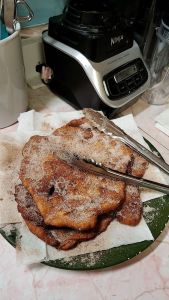
Ailantha posted – Busy morning here. After fair fiasco of yesterday I promised grand daughter I’d make her kettle corn and elephant ears today. Her mom helped with the kettle corn. And I made blueberry muffins for breakfast. Granddaughter’s taken the kettle corn back to her archeological dig to share with the others. Elephant ears don’t travel well, so she ate hers, I sent some with my son and his group as they head to the fair today. And we have a few left for we older folk here at home. Just get her off for the drive back to the high desert. Now I’m going to sit down for a bit with an elephant ear and a cold drink in front of the fan before starting the next project.
After an inquiry about how she’s doing… “We are just really drained. Retrospectively, we were not hurt, most of us far enough away from the incident to not be in any real danger. But the adrenaline surge and heat exhaustion of the day has left us all just limp.”
There was a question about the Bartholomew baby blanks. They’re being working on this week and hopefully we’ll be able to start dressing them, soon.
Loren worked on the trellis for the rosebush while Anja was tending plants. The rosebush barrel also has garlic, potatoes and thyme growin in it, plus what I think is a rather stressed re-grown celery.
Helen Louise posted – Heading down to Brookings for a mini vacation… got a few things finished first. Boys cape, girls dress and a 1970s linen blouse. I brought blue linen to make hubby a roman tunic while we hang out down here… hope you all have fun on project day…

Isabeau posted – Today’s project is pulling EVERYTHING from the 2nd bedroom. It was my sewing room and third kiddo is moving back home for a stretch. My “studio” will be in the garage. The “surplus” filled a 17 ft. Uhaul and going in a storage unit. Such an undertaking. Hurray for Coleman, Brad, and Chase for being the mules of the operation. Next week, making the new space operational and workable.

Recipes
CURD FRITTERS – https://www.plimoth.org/learn/plimoth-online-historyhome-tm/recipes – For process pix go here:
Curds are a soft cheese like cottage cheese or ricotta. These fritters are a lot like thin pancakes or crepes. This recipe is from the 1594 cookbook The Good Huswifes Handmaide for the Kitchin. pp. 47-48.
To make Curde Frittors
Take the yolks of ten Egs, and breake them in a pan, and put to them one handful Curdes and one handful of fine flower, and sttraine them all together, and make a batter, and if it be not thicke ynough, put more Curdes in it, and salt to it. Then set it on the fyre in a frying pan, with such stuffe as ye will frie them with, and when it is hot, with a ladle take part of your batter, and put of it into the panne, and let it run as smal as you can, and stir then with a sticke, and turne them with a scummer, and when they be fair and yellow fryed, take them out, and cast Sugar upon them, and serve them foorth.
Modern Version
5 eggs
½ cup curds (ricotta, washed cottage cheese or other soft cheese)
½ cup wheat flour
salt
cooking oil or butter
sugar (optional)
Make a thin batter with the eggs, curds and flour. Season with salt. Heat a small amount of cooking oil in your frying pan. When the oil is hot, pour in the batter and tip the pan to make the batter spread very thin (that’s what “let it run as small as you can” in the recipe means). They should be like crepes. When brown on one side, use your knife to flip them over or slide them onto a plate and flip them over into the pan. Add more oil to the pan when needed. Serve with sugar sprinkled on the top if you wish.
You can make these sweet, as suggested in the origina,l or savory by adding 1/4 cup of chopped fresh herbs.

Miscellaneous pix
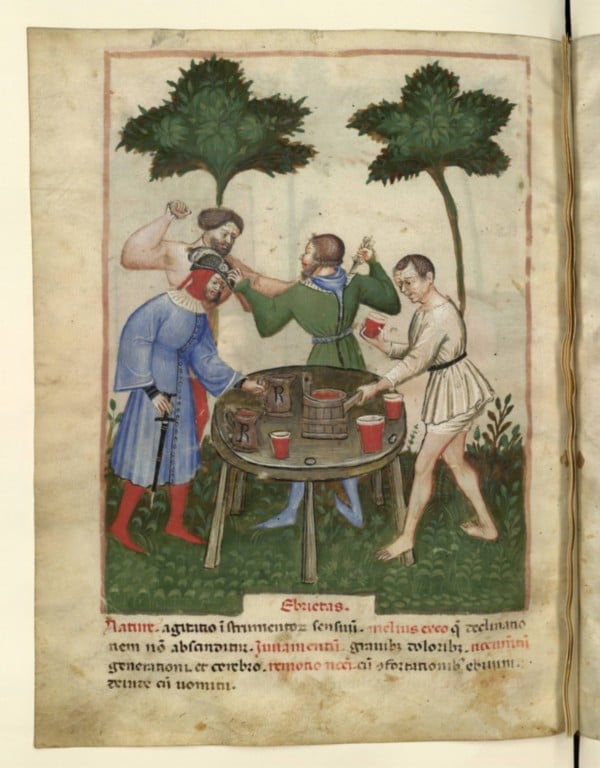
Marie Lescadieu – folio 88v – This image illustrates drunkenness (Lat. ebrietas) in a Tacuinum Sanitatis from Italy in the 1390s
Bibliotheque Nationale du France, Paris MS. Nouvelle acquisition latine 1673
The Tacuinum is a Latin translation of an Arabic book on the medical implications of various foods, activities, winds, and kinds of clothing. The man without a dagger stands ready to punch. Is he grabbing his opponent at the neck, or trying to catch his opponent’s dagger hand? The artist does not make it clear.


Music
“Chansons De Trouvères” with lyrics and musical notation – Musica Medievale – Ensemble: Paul Hillier & Andrew Lawrence-King Album: Chansons De Trouvères Video: Mss. 844-845-846 (XIII/XIV cent.) http://www.facebook.com/musicamedievale
In this wonderful album Paul Hillier and Andrew Lawrence-King perform music by Moniot d’Arras, Thibaut de Navarre, Colin Muset and Gace Brulé; trouvéres of northern France. The interpretation of the pieces is elegant, minimal and intimate, perhaps at times even in contrast with the themes treated by some trouvéres, Colin Muset for example. After a lot of research I was able to find the manuscript sources of all the songs on this album: in my opinion, being able to listen and read them together is a wonderful experience.
- Volez Vous Que Je Vous Chant – Anonymous
- Les Oxelés De Mon Paix – Gace Brulé
- Ce Fu En Mai – Moniot D’Arras
- Ausi Conme Unicorne Sui – Thibaut de Navarre
- Deus Est Ensi Conme Li Pellicanz – Thibaut de Navarre
- Cançon Ferai, Que Talenz M’en Est Pris – Thibaut de Navarre
- En Mai, Quant Li Rossignolez – Colin Muset
- A La Douçor De La Bele Seson – Gace Brulé
Quant Voi La Flor Nouvele – Anonymous


Links
The Giant Jelling Viking Stone Ship – https://www.heritagedaily.com/2021/07/the-giant-jelling-viking-stone-ship/139717?fbclid=IwAR3ei3bzQaNtOaTlklydEScIfMwedfRRm3plg8SQnsN070tY-DDXebOINE0
Charles Bridge (includes the good animation of the building of the bridge!) – https://czech-archaeology-news.estranky.cz/articles/czech-archaeology-news-2021/charles-bridge.html
Pohansko near Břeclav, early medieval fortified settlement – https://czech-archaeology-news.estranky.cz/articles/history-of-czech-archaeology/pohansko-near-breclav–early-medieval-fortified-settlement.html
Archaeological find of the church in Vyšehrad Castle (Prague) 2014 – https://czech-archaeology-news.estranky.cz/articles/history-of-czech-archaeology/archaeological-find-of-the-church-in-vysehrad-castle–prague–2014.html


Video Links
Meet Mistress Kemp at New Inn, Peasenhall – The Landmark Trust – Meet Mistress Kemp from the New Inn at Peasenhall and find out all about life in medieval Inn – how travelers fared and food was prepared in a busy kitchen.

Funnies


Largesse, Gifts and Auction items
· ASXLVII = 24
· ASXLVIII = 88
· ASXLIX = 794
· ASL = 2138
· ASLI = 731
· ASLII = 304
· ASLIII = 146
· ASLIV & ASLV = 230
· ASLVI = 176 plus 4 puppets, 4 powder fort, 8 cheese spice and 9 powder douce packets, 1 kiss-lock pouch, 9 tiny bobs, 7 pincushions, 3 pins, 3 snip case w/snips, lucet cords, 25 pouches for block-printing, 2 medium pouch, 4 small pouches, 12 bookmarkers, 14 unfinished pincushions, 1 sewing kit (except for bone needle), varnished stuff (124), 2 emery strawberries, 1 woolen spool-knit cord, 48 key bottle openers
Total as a Household = 4237 handed off

In ministerio autem Somnium! Anja, graeca doctrina servus to House Capuchin
Page Created 7/24/21 & published 7/26/21 (C)M. Bartlett
Last updated 7/26/21

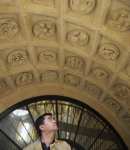
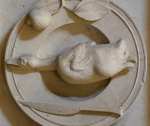
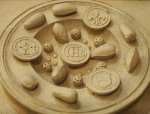



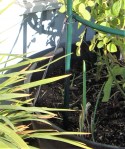

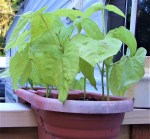

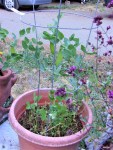
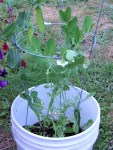
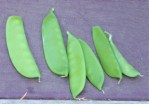










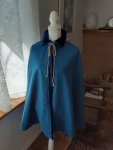
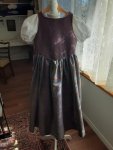
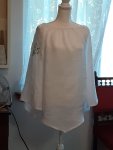
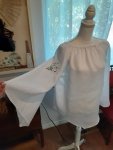
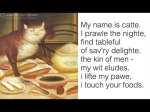


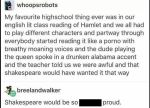

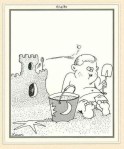

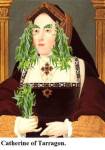

Leave a comment